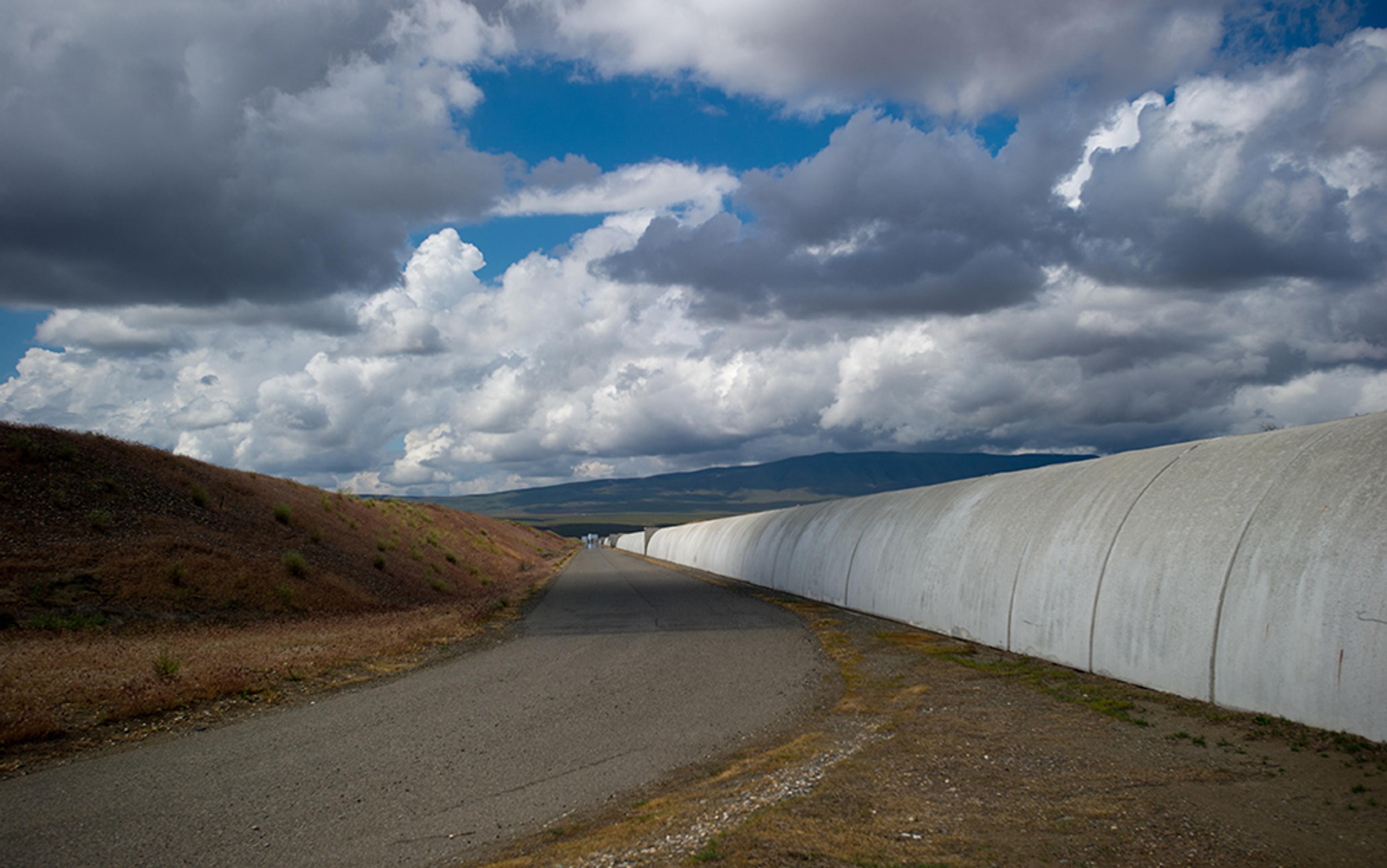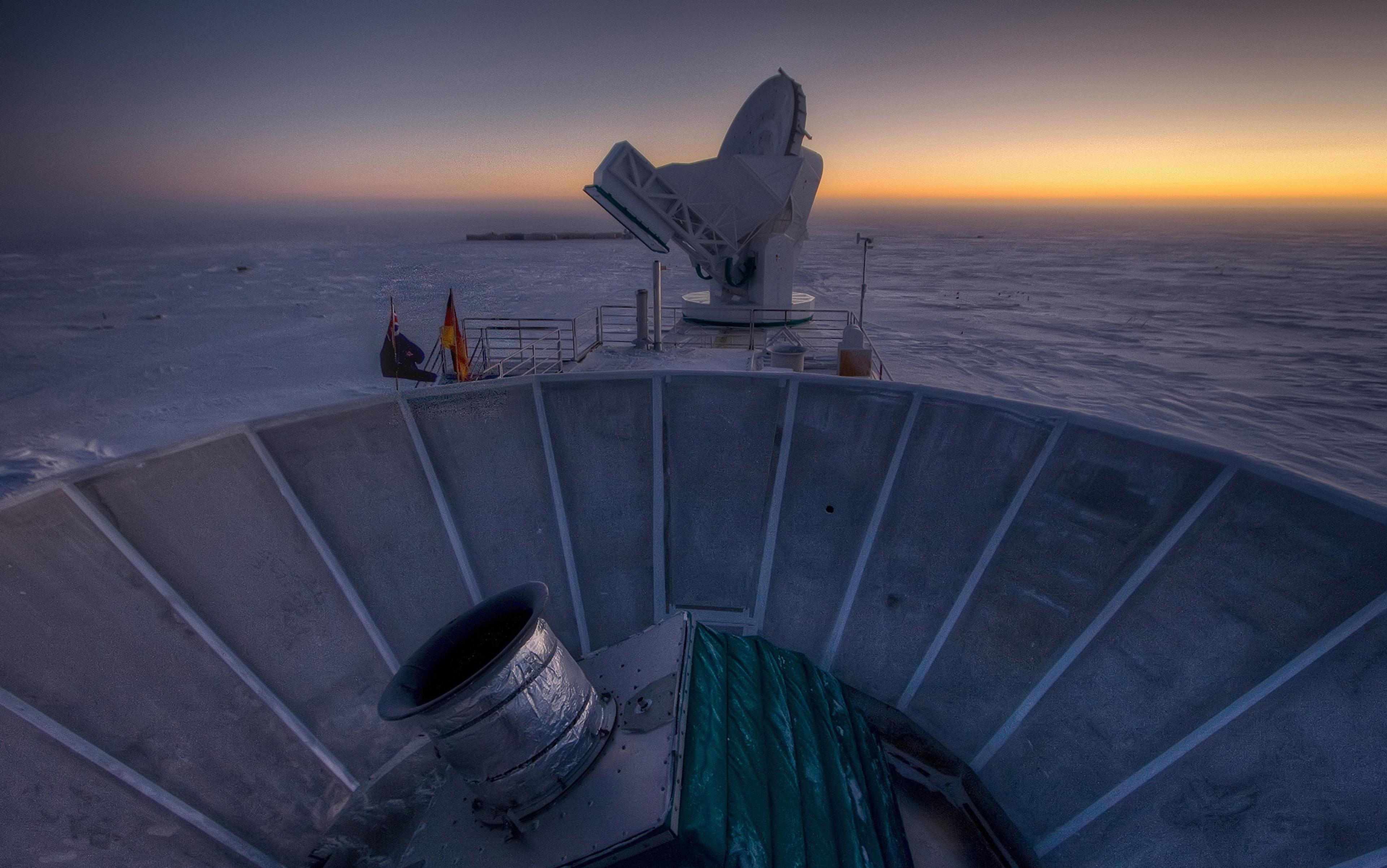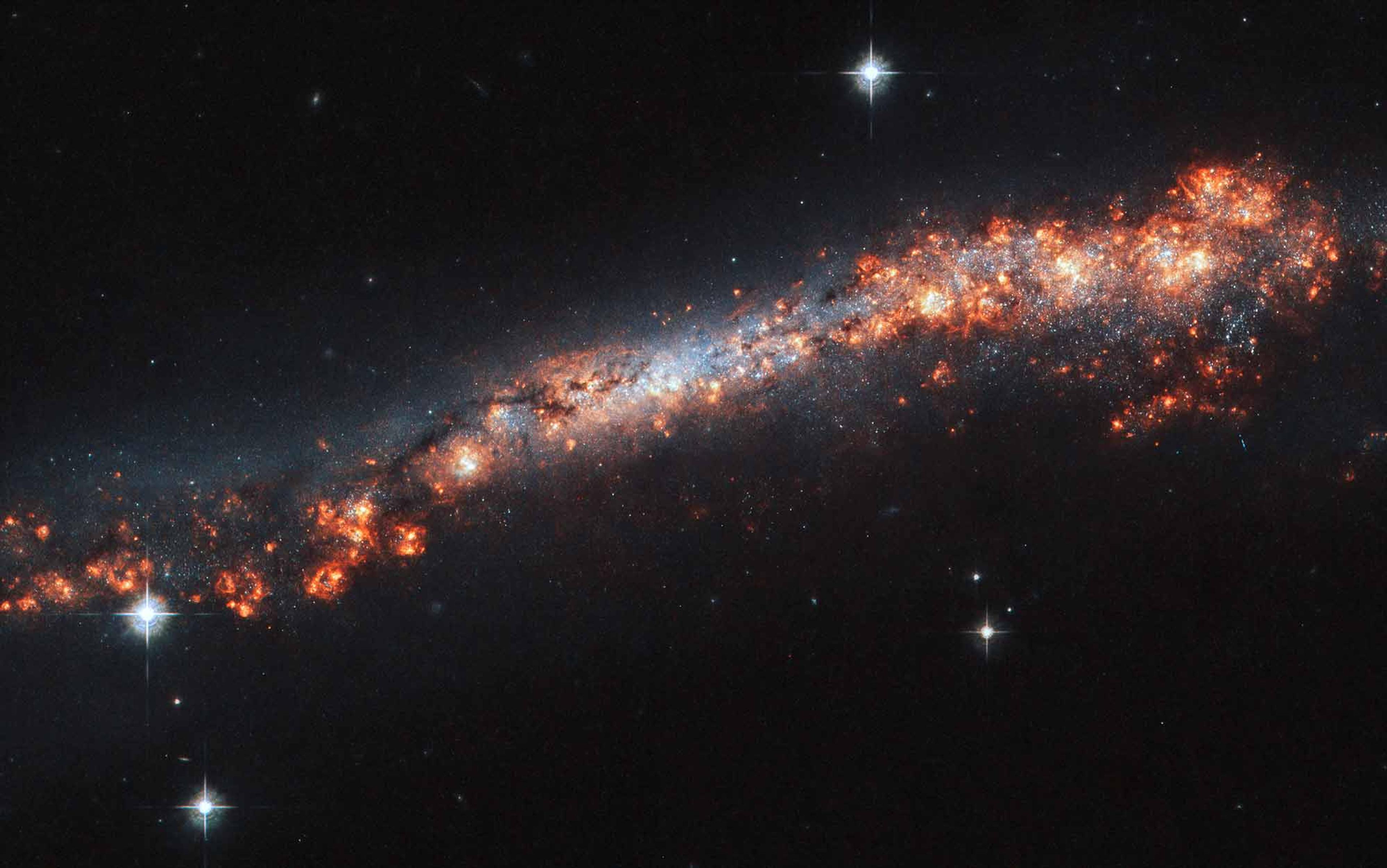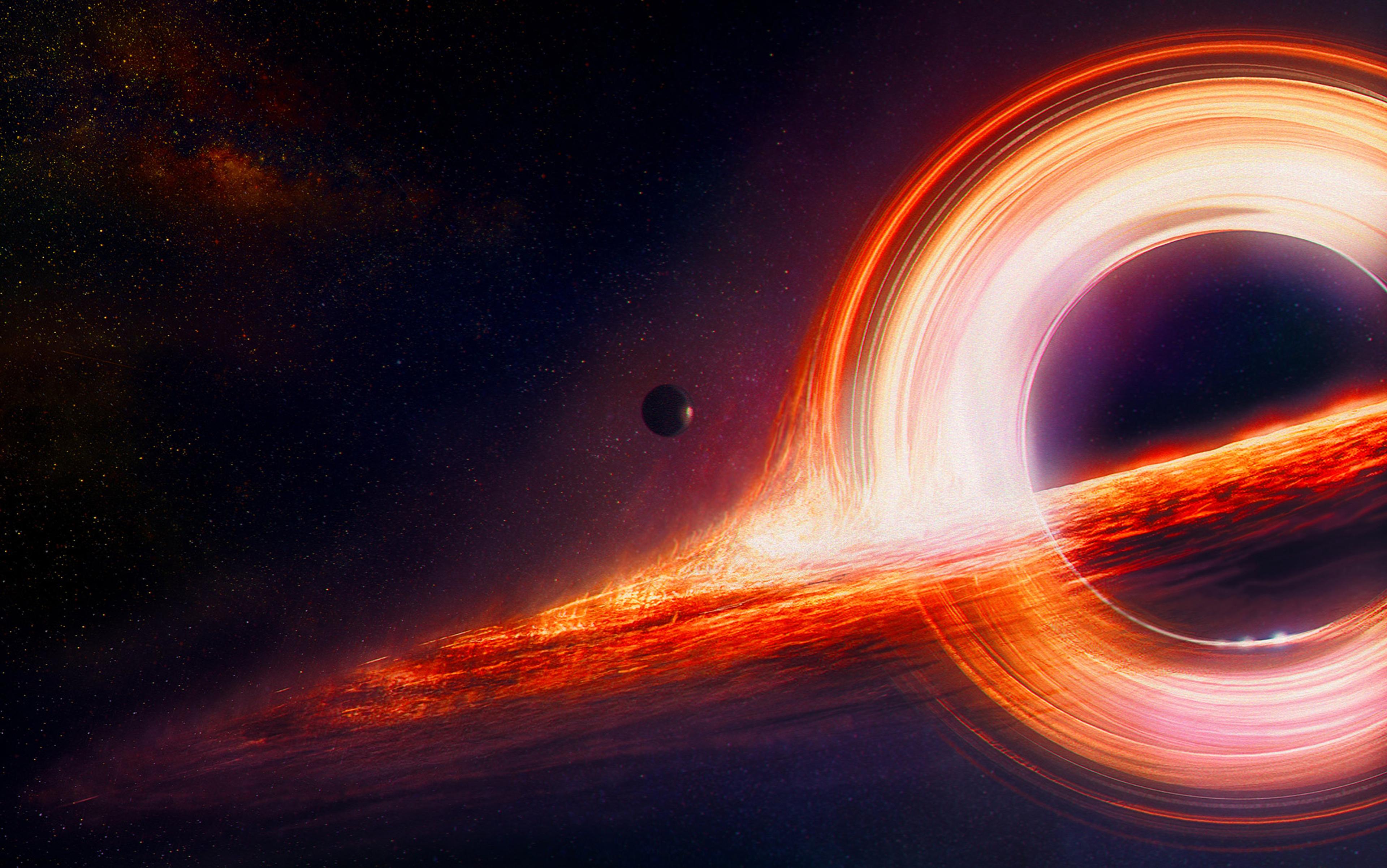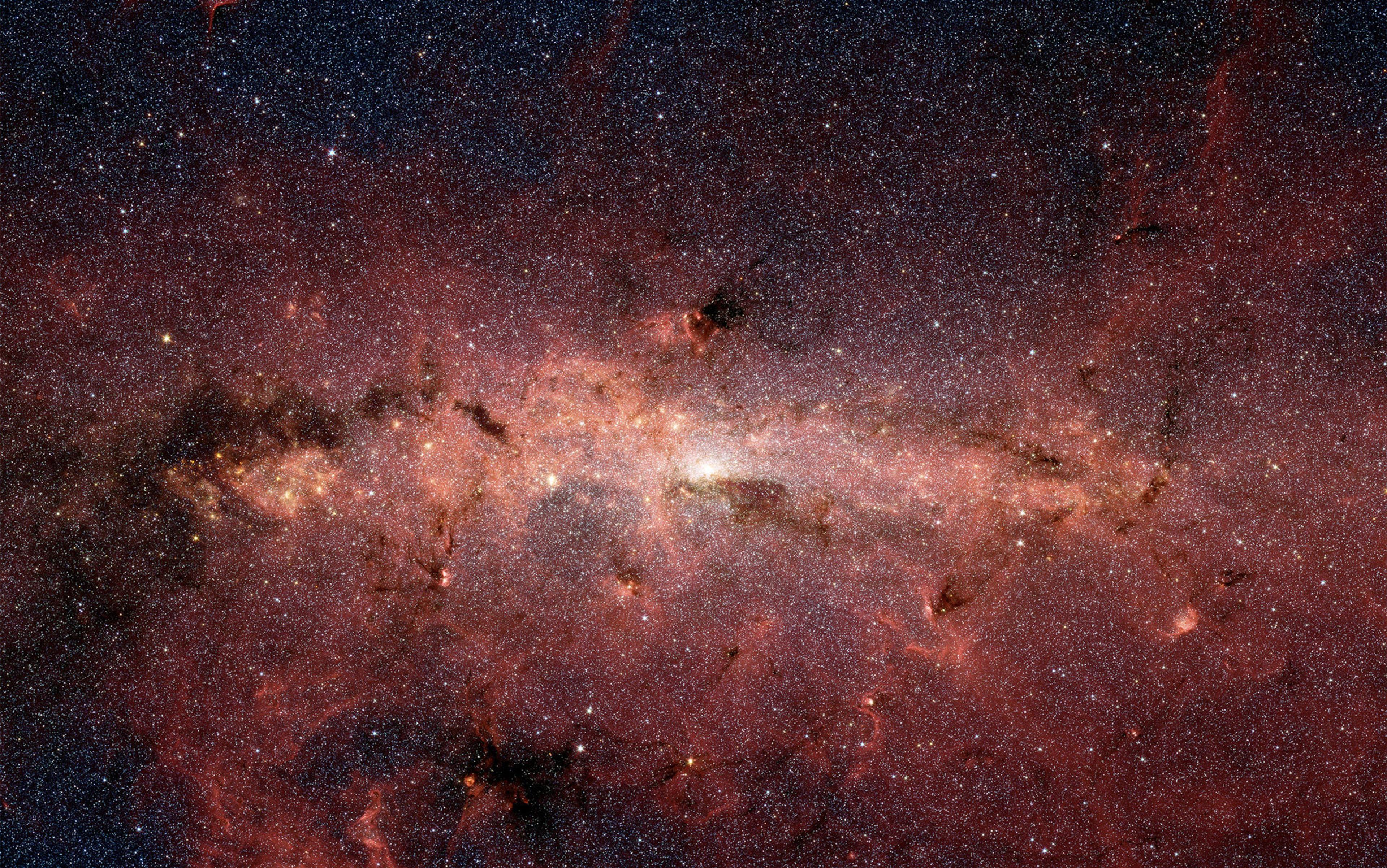In February 2016, physicists working on the LIGO experiment reported the discovery of gravitational waves, spacetime ripples predicted by Albert Einstein’s general theory of relativity. It was instantly hailed as a sure bet for a Nobel Prize. But 47 years earlier, a now-forgotten pioneer wowed the world with exactly the same claim. Janna Levin recovers this piece of lost history in an exclusive excerpt from her new book.
In 1969, Joe Weber announced that he had achieved an experimental feat widely believed to be impossible: he had detected evidence for gravitational waves. Imagine his pride, the pride to be the first, the gratification of discovery, the raw shameless pleasure of accomplishment. Practically single-handedly, through sheer determination, he conceives of the possibility. He fills multiple notebooks, hundreds of pages deep, with calculations and designs and ideas and then he makes the experimental apparatus real. He builds an ingenious machine, a resonant bar, a ‘Weber bar’, which vibrates in sympathy with a gravitational wave. As guitar strings go, a solid aluminium cylinder about two metres long, one metre in diameter, and in the range of 3,000 pounds isn’t easy to pluck. But it has one natural frequency at which a strong gravitational wave would ring the bar like a tuning fork.
Yonah was born in New Jersey in 1919 into a family of brothers and Lithuanian Jewish immigrant parents. Yonah became ‘the Yankee’ became ‘Joe’. A schoolteacher unable to interpret his mother’s accent, misheard ‘Joseph’ and his mother nodded that that was close enough. Joseph Weber could have been Yonah Gerber, but the family accepted passports filled out cheaply and quickly in the name of Weber.
Joe Weber dropped out of Cooper Union to save his parents money, joined the Naval Academy, and became an officer, a radar expert, a navigator, and eventually a commander. He was on the aircraft carrier USS Lexington when it sank during his Second World War naval service and he eventually commanded a submarine chaser. He tells Kip Thorne [an expert in gravitational physics at Caltech] in an interview Kip recorded in 1982, ‘I was the one given the job of finding the right beach to land Brigadier General Theodore Roosevelt Junior and 1800 rangers in July of 1943. After the war I was head of the electronic countermeasures section … so I knew electronic countermeasures of the entire navy.’ Weber’s accent has that raw Americana I associate with men of his generation. His family called him ‘Yankee’ after a childhood accident – he was hit by a bus at the age of five – required speech rehabilitation that broke his Yiddish and scarred him with a broad American accent.

Joseph Weber with his aluminium bar gravity wave detector at the University of Maryland, November 1987. Photo by Jim Sugar/Corbis
After his service, Weber was hired as a professor at the University of Maryland with ‘one of the highest imaginable salaries. The princely sum was $6,500 a year.’ He was 29. Oddly he had no PhD, although it was a condition of his employment that he procure one. To this end, he approached the famous physicist George Gamow for a PhD project. Professor Gamow asked, ‘What can you do?’ Weber explained, ‘I’m a microwave engineer with considerable experience. Can you suggest a PhD problem?’ Gamow said ‘no’, according to Weber. Just ‘no’.
The irony that he didn’t have to explain to Kip but I ought to explain here is that Gamow, with Ralph Alpher and Robert Herman, predicted the existence of the light left over from the Big Bang, currently lingering in the microwave bandwidth: the cosmic microwave background radiation, the glow from the origin of the universe. Had Gamow said ‘yes’, Weber and he might have won the Nobel Prize for its observational detection. Instead in 1965 by accident, almost begrudgingly, Arno Penzias and Robert Wilson, scientists at Bell Labs and subsequent Nobel winners, detected the primordial background light. It’s been said that Penzias and Wilson essentially observed the most important thing anybody has ever seen.
Now replay: a young, aggressive, expert microwave engineer goes to the acclaimed Gamow, who predicted microwave radiation left over from the big bang, the single best evidence for the origin of the universe, and asks, ‘Do you have a project for a microwave engineer’, and inexplicably Gamow says ‘no’.
Weber’s scientific life is defined by these significant near misses. After Gamow’s mystifying dismissal, Weber went on to study atomic physics and thought of the concept for the maser (MASER=Microwave Amplification by Stimulated Emission of Radiation, or in more modern usage, Molecular Amplification by Stimulated Emission of Radiation) and by 1951 gave the first public presentation, which had all of the essential ideas. So Weber is credited, though not as widely as some argue he should be, with an independent discovery of the predecessor to the laser (LASER=Light Amplification by Stimulated Emission of Radiation). Had his luck been different, he might have shared a Nobel for that discovery, too. And the patents. And the money.
Weber had nearly made the summit before. He was Shackleton many times, almost the first, almost the first to see the Big Bang, almost the first to patent the laser, almost the first to detect gravitational waves. Famous for nearly getting there. After his disappointment with masers, he mentions casually to Kip in the interview, and with no irony: ‘One of the reasons that I wanted to, ah, get into relativity research was that it didn’t seem to be a field with, ah, any particular controversy.’
In black and white photos he bends over the cylinder, hair both dark and grey, brushed back and high, shirt white and short-sleeved, glasses black and square. He affixes quartz crystals to the middle of the bar, which when squeezed by the bar’s resonant vibrations produce an electrical voltage that sends currents through the electronics wired off the bar’s midsection to record the harmonics of the plucked string. The contraption is modest and demands little.
Weber had a bar at the University of Maryland, in an ordinary looking laboratory, occupying a sensible footprint in a little room managed easily by one person. He built and installed other bars about a mile from campus in a structure that could accurately be compared to a garage. Weber then stationed a bar at Argonne National Laboratory near Chicago, far from the Maryland bars to impart confidence to coincident events, to rule out neighbourhood mayhem, car crashes and storms. He has thought this through. He has been ingenious and tenacious and daring. The bars are cheap. And they work. Daily they ring in response to multiple signals from our galaxy.
There is shock, then celebration. Applause even. He is heralded. He is on the cover of magazines. He is famous
The universe rewards him with a noisy sky. He doesn’t presume to identify the sources. He’s agnostic about the sources. He leaves that to the theorists. He has discovered a new frontier for experimentalists to explore and theorists to explain. He has made one of the experimental discoveries of the century. It takes him and his small team a decade, a respectably extensive investment, yet less than the hundred years projected by sceptics for successful completion of a viable experiment.
In 1969, at a typically uneventful conference on general relativity – the kind of conference where the very existence of gravitational waves was still under debate – Joe Weber makes his announcement. He has detected ‘Evidence for Discovery of Gravitational Radiation’, as his paper was titled, maybe from colliding stars, or neutron stars, or pulsars, somewhere over there, around the centre of the galaxy. There is shock, then celebration. Applause even. He is heralded. He is on the cover of magazines. He is famous.
Kip remembers the announcement, and while he was surprised Weber presented results so soon, he thought to take them seriously. Excited by Weber’s reports, physicists tried to understand the sources capable of ringing his bars so consistently and so energetically. Theorists were also inspired to contemplate all manner of novel sources, not necessarily to explain his experimental data so much as to explore the full terrain of possibilities the universe might have to offer. The British physicist Roger Penrose considered crashing gravitational waves. Stephen Hawking threw imaginary black holes at each other.
Enthusiasm paled as calculations came in. Weber estimated that the energy output from our galaxy would correspond to the destruction of thousands of suns yearly to be consistent with his data. His agnosticism on the sources is appropriate for an experimentalist, who should remain impartial and unbiased. But to a theorist, that sounded like an implausible bounty of energy. Martin Rees, now Sir Martin Rees, the British Astronomer Royal, showed with his collaborators Dennis Sciama and George Field that the amount of energy Weber claimed to observe was simply too much energy for our galaxy to produce without disrupting entirely. Still, there were uncertainties in the calculations and Weber persisted unflagging, accepting the ambiguities left open to him.
Weber spent some time with John Wheeler in Princeton where he first met Kip along with the influential theoretical physicist Freeman Dyson. Weber and Dyson discussed the possibility that exploding stars – supernovae – might ring spacetime and Weber may have chosen the resonant frequency of his bar to align with this possibility. Weber mocked theorists for their superior attitude, but despite himself he valued Dyson’s encouragement, recounting: ‘Dyson wrote, said he’d been thinking about it. First when he heard this project was being carried on he thought I was insane but he had thought the matter through and had done the first gravitational-collapse calculations and he had sent me those and those are reproduced in this book Interstellar Communication.’
Even the great Robert Oppenheimer encouraged Weber. ‘The work you’re doing,’ he said, ‘is just about the most exciting going on anywhere around here’
In Interstellar Communication, a sober if unconventional look at the merits of communication with prospective extraterrestrials, Dyson published an article on ‘Gravitational Machines’ in which he pursued the promising candidates to source gravitational waves: compact dead stars [neutron stars and black holes, in modern terms]. Although we’re able to see compact dead stars by now, in 1963 their existence was uncertain. Dyson imagined that an advanced civilisation could build two orbiting compact dead stars to slingshot spacecraft to near light’s speed. He also recognised that such a pair occurring naturally would emit a powerful burst of gravitational radiation that Weber’s equipment might detect. Dyson’s idea survives, not as a form of extraterrestrial communication but as one of the most important sources for the direct detection of gravitational waves. [The LIGO detection reported in February resulted from the merger of two orbiting black holes.]
Weber reads Kip some motivating lines from the publication. ‘Freeman J Dyson, Gravitational Machines… loss of energy by gravitational radiation will bring the two stars closer together with ever-increasing speed until in the last seconds of their lives they plunge together and release a gravitational flash of … unimaginable intensity… should be detectable with Weber’s existing equipment… It would seem worthwhile to maintain a watch for events of this kind using Weber’s equipment.’
Even the great Robert Oppenheimer encouraged Weber. Weber picked Oppenheimer up from the airport during a visit in the mid-1960s and found him to be very enthusiastic about the pursuit of gravitational waves. Weber relays Oppenheimer’s remark: ‘“The work you’re doing,” he said, “is just about the most exciting work going on anywhere around here.” I was astonished and of course it gave me a tremendous morale boost. He was not one to give a compliment lightly.’ So that’s the early history, he tells Kip. Evidence registered, labelled, filed.
As fast as scientific momentum can change, it changed. Soon there were resonant Weber bar detectors under development at IBM, in Scotland, Japan, at Stanford, in Germany, at Bell Labs, in Louisiana, in Rochester, Italy, in Moscow, and California. All over the place. Literally, all over the place. In 1972, NASA even put one of Weber’s instruments, the Lunar Surface Gravimeter, on the moon. There were new designs and refinements and analysis techniques. And no one, no one except Weber, detected a gravitational wave. It was dead quiet out there.
Ron Drever, still in Glasgow at the time (later the co-founder of LIGO), and his collaborators as well as other groups around the UK – from Harwell, Cambridge, Oxford, Glasgow – devised their own bars with ingenious alterations and enhancements beyond the simple tuning fork. Drever began his investment in the bar technologies in the early 70s motivated by the belief that Weber could be right.
Stephen Hawking and Gary Gibbons of Cambridge discussed equipping a lab with parts culled from a junkyard, although the assemblage never materialised. Drever investigated a tank in a junkyard on their behalf, its original purpose to decompress divers. He concluded it was indeed cheap but useless.
Drever requested to visit Weber at his Maryland laboratory some time in the 1970s, but Weber, by now angry and suspicious, replied flatly that Drever was not welcome. Drever arrived anyway and found the contempt undiluted. Weber’s greeting: ‘You can’t just walk in off the street and do gravitational wave experiments.’ Drever quite agreed but somehow Weber couldn’t discern his upbeat tones. Unfazed by Weber’s reception, Drever returned to the UK to build and expand his own bars in Glasgow. Although he had reason for doubt, he permitted an optimism to render his mind open to the prospects. To his dismay, the bars offered only noise, and quickly he and his collaborators acknowledged that the doubt had ripened to a conclusion: Weber must be wrong.
The Russian physicist Vladimir Braginsky had been the first to build a bar and announce a negative result. He ran the experiment for only a few weeks and quickly decommissioned to try harder with better bars or consider an entirely different experimental approach. Drever’s bar experiments were next and more extensive. He also spent a year or two trying ‘all kinds of crazy ideas’ and there was talk of a big British project at Rutherford laboratory in Cambridge. The German group also refuted the claims of detection with a very reputable bar experiment. Bars were hedging to the periphery.
Joe Weber’s claims in 1969 to have detected gravitational waves – the claims that catapulted his fame, that made him possibly the most famous living scientist of his generation – were swiftly and vehemently refuted. The subsequent decades offered near total withdrawal of support, both from scientific funding agencies and his peers. He was almost fired from the University of Maryland. Weber summed up his circumstances with a self-effacing remark about his second wife, Virginia Trimble, a young astronomer 23 years his junior. The sociologist Harry Collins recounted: ‘[Weber] told me with a smile that when he married her, he was famous and she was not, and now their roles were reversed.’
Weber never relented, even as the evidence against him accumulated and the community turned away. Although occasionally his claims of a direct detection of gravitational waves are re-examined, the evidence weighs heavily toward the negative. Weber never measured a gravitational wave but instead recorded a fault in the equipment, or an error in the analysis, or, worst of all interpretations, he unconsciously biased the data.
Richard Garwin, an experimentalist from IBM – initially motivated by Weber’s claims, or motivated possibly by suspicion – briskly fashioned and calibrated his own detector at the narrow frequency of Weber’s original bar and when the skies were as quiet for him as they had been for the other experimenters around the world, he was displeased. Convinced from previous exchanges that Weber would not be swayed by reason or raw data, Garwin opted to confront him publicly, ambush style.
At a relativity conference at MIT in 1974 – these conferences were getting progressively more lively and driven by controversy kudos to Weber – Garwin stood at the front of the hall and denounced Weber and his accomplishment. Weber and Garwin almost came to blows, the two tense in threatening postures in front of an audience of otherwise peaceful relativists and separated by the upheld cane of the polio-sabotaged MIT astrophysicist Phil Morrison. They retreated, Weber resolute, Garwin contemptuous.
Weber was goaded, pulled deeper into his convictions. Garwin’s experiment was not as good as Weber’s, some might say. It was smaller, thrown together briskly and operational only for a month. And in any scenario, two different experiments are never identical and require painstaking efforts to compare. As a scientist, Weber had a right and more, an obligation, to indicate the failings of the comparison. He couldn’t concede his own failure on the basis of incorrect logic and poor data.
Circumstances did not get better for Weber for the next 25 years. His detractors caught him in egregious errors. He made claims that were indisputably false. Weber noticed that when the centre of our galaxy was overhead, once every 24 hours, he recorded clusters of events. He deduced the signal could be coming from the dense nucleus of our galaxy, where lots of activity might plausibly generate a significant output of gravitational waves, most strongly detected during an overhead alignment. The astronomer Tony Tyson was in the front row, alongside physicist ‘Johnny’ Wheeler and Freeman Dyson, during a colloquium in Princeton in which Weber showed a plot with a big peak in the data once every 24 hours when the centre of the galaxy was overhead, indicating powerful bursts of gravitational waves coming from the dense galactic centre.
‘We all leapt to our feet,’ Tyson recalls, ‘and said, “Wait a second, Joe, gravitational waves should pass right through the Earth.”’ Problematically for Weber’s conclusion, since gravitational waves do indeed pass through the Earth, his bars should accumulate events once every 12 hours, both when the centre of the galaxy was overhead and when it was underfoot. When the error in reasoning was pointed out to Weber, he reanalysed the data and came back within a couple of weeks with clusters of events every 12 hours. This flexibility in his data analysis deepened distrust.
Tony Tyson thought he himself should have cut his losses, having built his own bars at Bell Labs. He ran his bars for over a year and ‘didn’t see a damn thing’. But there was an excitement still surrounding the possibility of new physics, enough excitement that he couldn’t resist the urge to do better, push the limits further. David Douglass at the University of Rochester built a carbon copy of Tyson’s bar so they could search for widely separated coincident events. Courtesy of AT&T, Bell Labs’s parent company at the time, a direct coaxial cable ran between Tyson’s lab, Douglass’s lab, and Weber’s lab. They could each directly download the others’ data onto digital tapes and perform separate analyses.
People became unkind… he was tricked and deceived into false hopes that seemed to generate false claims, the ruse revealed in very public, very humiliating forums
In an analysis of the data from the independently built and operated bars, Weber claimed there were glitches coincident with those registered by his detector in Maryland. Coincidence across widely separated and independently operated instruments would support his claim that the signals were truly astrophysical and not local earthly interference. Meanwhile Douglass and Tyson found nothing above the noise.
Tyson conjectures that Weber was pulling false signals out of the noise of his own data coincident with entirely fake pulses Tyson intentionally injected into his data just for the purposes of calibration. ‘I thought we informed Joe of the calibration injections. Maybe we didn’t,’ Tyson explained, mystified. If Weber claimed coincidence with these false signals, he could detect coincidence anywhere. Even more damning, the groups recorded the data using different time standards. Tyson and Douglass used Greenwich Mean Time while Weber used a different time standard. When Weber recorded an event at 02:00 and claimed simultaneous events were detected with Tyson and Douglass at 02:00, the events were actually offset by four hours. There were no simultaneous events. Under the best of circumstances, it would be impossible to recover from that kind of mistake.
Eventually, Weber removed himself from the task of data analysis to quell any accusation of his personal bias, but it was too late. People became unkind. Intentionally he was tricked and deceived into false hopes that seemed to generate false claims, the ruse revealed in very public, very humiliating forums. He became a fraud to expose. Tyson said of Weber, ‘He was a great electrical engineer, but a lousy statistician.’
By the late 1980s, the professor emeritus used his wallet to maintain his laboratory, an unembellished concrete box between a Maryland wood and a golf course. He is reported to show the actual wallet to make the point. The sign in front he did not maintain with particular care and its pride faded, the announcement of the monument, ‘Gravitational Wave Observatory’, blanched by weather.
Joe Weber died in September 2000, of complications from lymphoma.
From the book Black Hole Blues by Janna Levin, copyright © 2016 by Janna Levin. Published by arrangement with Alfred A Knopf, an imprint of The Knopf Doubleday Publishing Group, a division of Penguin Random House LLC.
